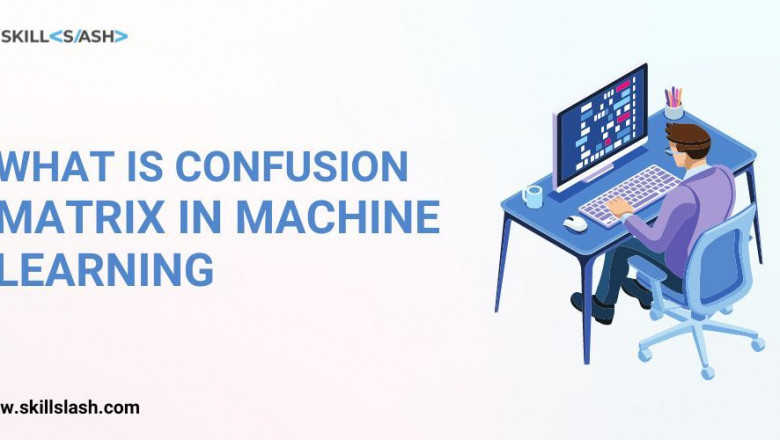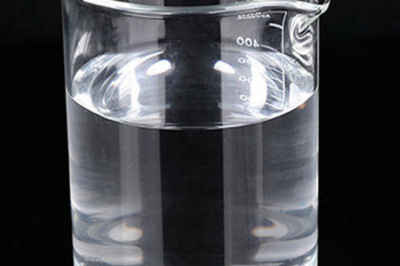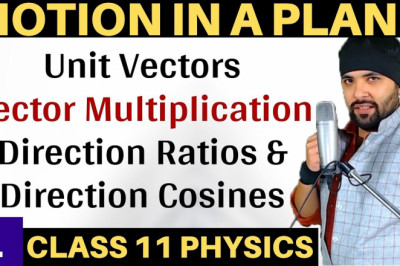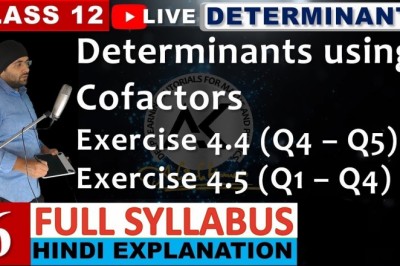views

What is a Confusion Matrix in Machine Learning?
In machine learning, a confusion matrix is a table that is often used to evaluate the performance of a classification model (or “classifier”) on a set of test data. For each instance in the test set, the classifier predicts a class label and the confusion matrix shows the number of times each predicted label was correct or incorrect. In this blog post, we will take a look at what a confusion matrix is and how it can be used to evaluate the performance of your machine-learning models. We will also see how to interpret the results of a confusion matrix and what some common pitfalls are that you should avoid.
What is a Confusion Matrix?
A confusion matrix is a table that is used to evaluate the performance of a machine-learning model. The table shows the predicted values for each class and the actual values for each class. The diagonal elements of the table represent the number of correct predictions, while the off-diagonal elements represent the number of incorrect predictions.
There are several measures that can be computed from a confusion matrix, including accuracy, precision, recall, and F1 score. Accuracy is the proportion of correct predictions made by the model. Precision is the proportion of positive predictions that are actually positive. The recall is the proportion of actual positives that were correctly predicted by the model. The F1 score is a measure of how well the model predicts positive examples and is computed as the harmonic mean of precision and recall.
How is a Confusion Matrix Used in Machine Learning?
A confusion matrix is a table that is used to evaluate the performance of a machine-learning model. The table is made up of four cells, each of which represents the number of predictions made by the model in each category. The first cell represents the number of true positives, which are predictions that were correctly classified as positive. The second cell represents the number of false positives, which are predictions that were incorrectly classified as positive. The third cell represents the number of true negatives, which are predictions that were correctly classified as negative. The fourth cell represents the number of false negatives, which are predictions that were incorrectly classified as negative.
The rows in the table represent the actual values, while the columns represent the predicted values. So, a row with two entries would represent an actual value of positive and a predicted value of either positive or negative. A column with two entries would represent a predicted value of either positive or negative and an actual value of either positive or negative.
The accuracy is calculated by taking the sum of the true positives and true negatives and dividing it by the total number of predictions made. This gives us a ratio of correct predictions to total predictions.
The precision is calculated by taking the sum of the true positives and dividing it by the sum of all predicted positives (true positives + false positives). This gives us a ratio of correct positive predictions to all positive predictions.
The recall is calculated by taking the sum of true positives and dividing by the sum of actual positives(
What are the Benefits of Using a Confusion Matrix?
A confusion matrix is a table that is used to evaluate the accuracy of a classification model. The table is made up of four columns: true positives, false positives, true negatives, and false negatives. Each row represents the actual class while each column represents the predicted class.
The benefits of using a confusion matrix are:
-It allows you to see how your classification model is performing in different classes.
-It can help you to improve your classification model by identifying areas where it is doing well and areas where it needs improvement.
-It is a simple and easy way to evaluate your classification model.
How to interpret a Confusion Matrix
In order to interpret a confusion matrix, it is important to understand what each of the four quadrants represents. The first quadrant represents true positives, which are correctly predicted positives. The second quadrant represents false negatives, which are incorrectly predicted negatives. The third quadrant represents false positives, which are incorrectly predicted positives. The fourth quadrant represents true negatives, which are correctly predicted negatives.
To calculate the accuracy of the predictions, we need to take the sum of the true positives and true negatives and divide it by the total number of samples. This gives us the ratio of correct predictions out of all of the predictions made.
$$ \text{Accuracy} = \frac{\text{True Positives} + \text{True Negatives}}{\text{Total Samples}} $$
The precision measures how many of the positive predictions were actually correct. This is calculated by taking the ratio of true positives to all positive predictions (true positive + false positive). High precision means that there were few false positive predictions.
$$ \text{Precision} = \frac{\text{True Positives}}{\text{True Positives} + \text{False Positives}} $$
The recall measures how many of the actual positive samples were correctly predicted as positive. This is calculated by taking the ratio of true positives to all actual positive samples (true positive + false negative). A high recall means that there were few false negative predictions
Alternatives to the Confusion Matrix
A confusion matrix is a table that is used to evaluate the accuracy of a classification model. The table shows the predicted class for each observation in the test set and the actual class for each observation.
There are other ways to evaluate the accuracy of a classification model. One way is to use a receiver operating characteristic curve (ROC curve). This curve plots the true positive rate (TPR) against the false positive rate (FPR) for different values of the threshold. The area under the ROC curve (AUC) is a measure of how well the model can distinguish between classes. Another way to evaluate a classification model is to use precision and recall. Precision is the number of true positives divided by the total number of predictions, and recall is the number of true positives divided by the total number of actual positives.
Conclusion
A confusion matrix is a powerful tool for measuring the accuracy of a machine-learning model. By visualizing the results of a model's predictions, a confusion matrix can help you quickly identify areas where the model is performing well and areas where it could use improvement. Skillslash can help you build something big here. With Best Dsa Course and Data Science Course In Hyderabad with a placement guarantee, Skillslash can help you get into it with its Full Stack Developer Course In Hyderabad. you can easily transition into a successful data scientist. Get in touch with the support team to know more.












